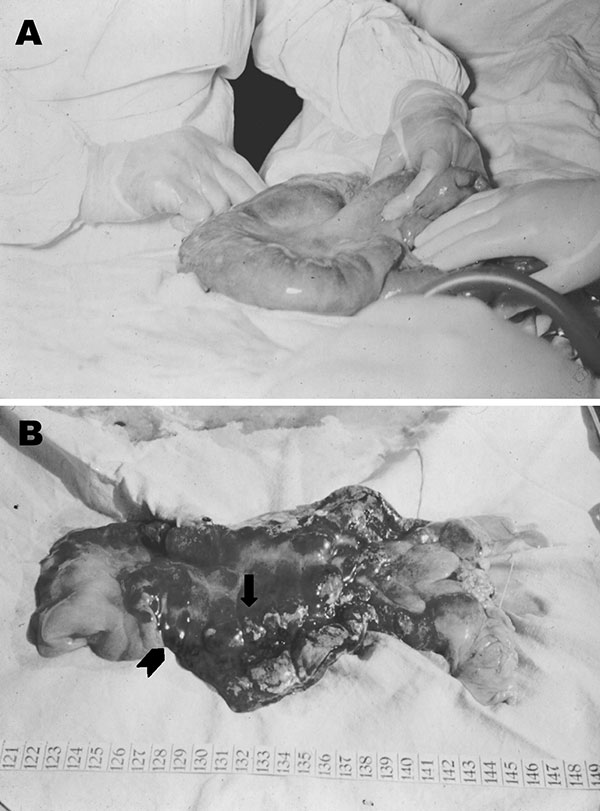Volume 9, Number 5—May 2003
Synopsis
Endemic Gastrointestinal Anthrax in 1960s Lebanon: Clinical Manifestations and Surgical Findings
Figure 3

Figure 3. A. Severe edema of a small bowel loop in intestinal anthrax with a large mesenteric lymph node held between the surgeon’s fingers. B. Same segment of bowel opened after resection. Edema, necrosis, and mucosal hemorrhages exist. A central eschar (arrow) and small surrounding nodules (arrowhead) are reminiscent of the cutaneous lesions of anthrax.
Page created: December 08, 2010
Page updated: December 08, 2010
Page reviewed: December 08, 2010
The conclusions, findings, and opinions expressed by authors contributing to this journal do not necessarily reflect the official position of the U.S. Department of Health and Human Services, the Public Health Service, the Centers for Disease Control and Prevention, or the authors' affiliated institutions. Use of trade names is for identification only and does not imply endorsement by any of the groups named above.